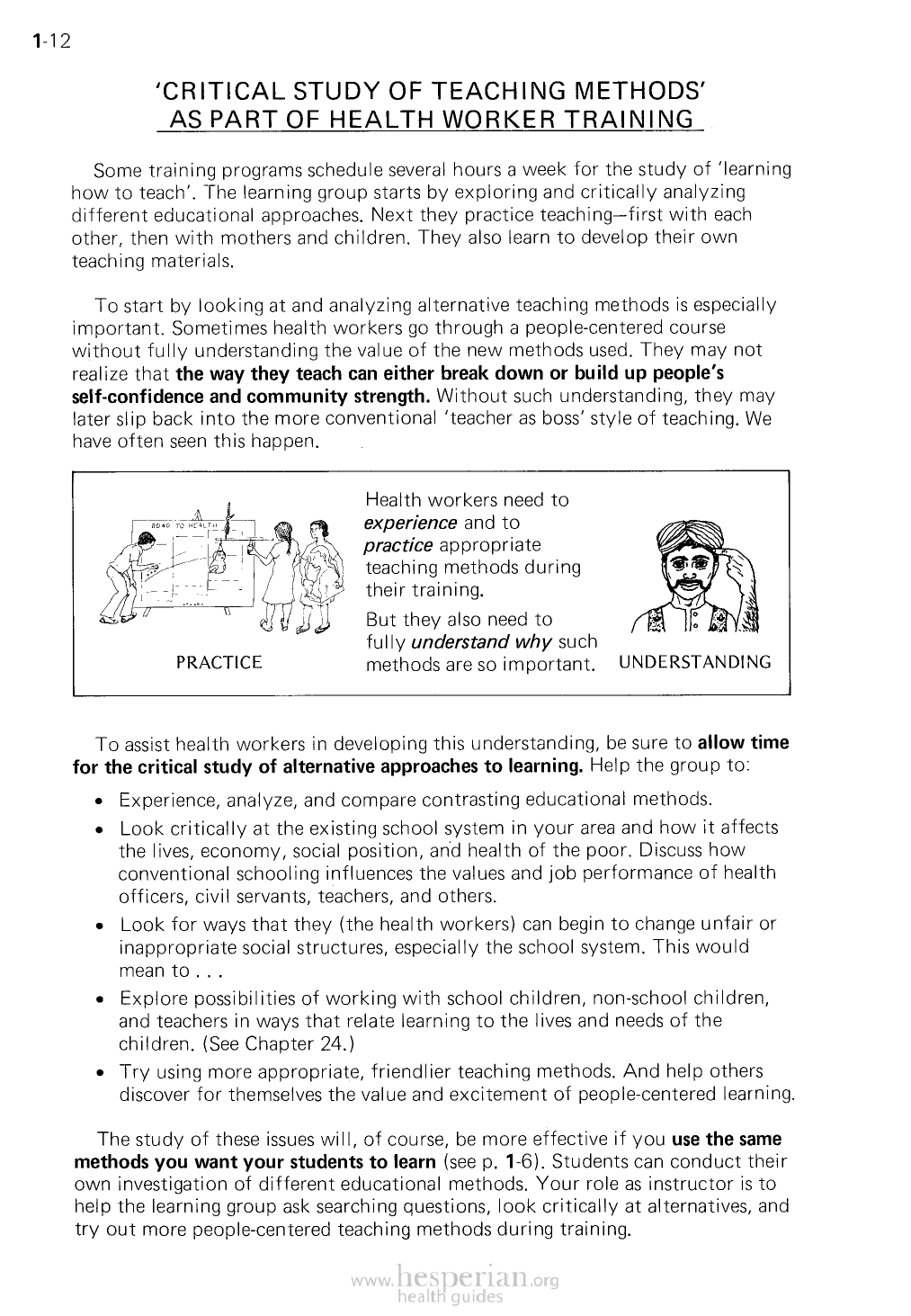
1-12
‘CRITICAL STUDY OF TEACHING METHODS’
AS PART OF HEALTH WORKER TRAINING
Some training programs schedule several hours a week for the study of ‘learning
how to teach’. The learning group starts by exploring and critically analyzing
different educational approaches. Next they practice teaching-first with each other,
then with mothers and children. They also learn to develop their own teaching
materials.
To start by looking at and analyzing alternative teaching methods is especially
important. Sometimes health workers go through a people-centered course without
fully understanding the value of the new methods used. They may not realize
that the way they teach can either break down or build up people’s self-
confidence and community strength. Without such understanding, they may
later slip back into the more conventional ‘teacher as boss’ style of teaching. We
have often seen this happen.
PRACTICE
Health workers need to
experience and to practice
appropriate teaching
methods during their
training.
But they also need to fully
understand why such
methods are so important.
UNDERSTANDING
To assist health workers in developing this understanding, be sure to allow time
for the critical study of alternative approaches to learning. Help the group to:
• Experience, analyze, and compare contrasting educational methods.
• Look critically at the existing school system in your area and how it affects
the lives, economy, social position, and health of the poor. Discuss how
conventional schooling influences the values and job performance of health
officers, civil servants, teachers, and others.
• Look for ways that they (the health workers) can begin to change unfair or
inappropriate social structures, especially the school system. This would mean
to . . .
• Explore possibilities of working with school children, non-school children, and
teachers in ways that relate learning to the lives and needs of the children. (See
Chapter 24.1
• Try using more appropriate, friendlier teaching methods. And help others
discover for themselves the value and excitement of people-centered learning.
The study of these issues will, of course, be more effective if you use the same
methods you want your students to learn (see p. 1-6). Students can conduct
their own investigation of different educational methods. Your role as instructor is
to help the learning group ask searching questions, look critically at alternatives, and
try out more people-centered teaching methods during training.